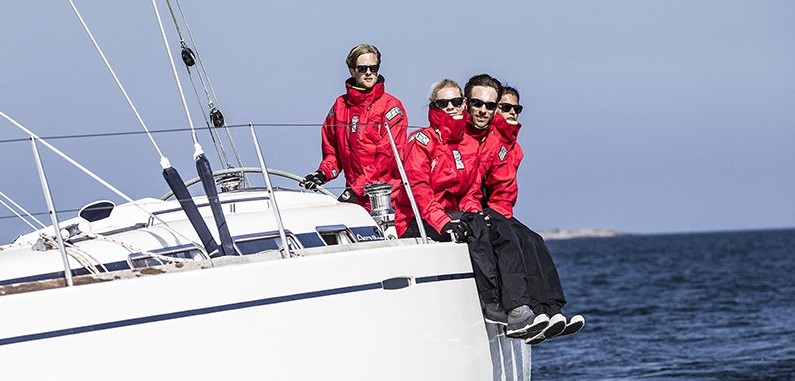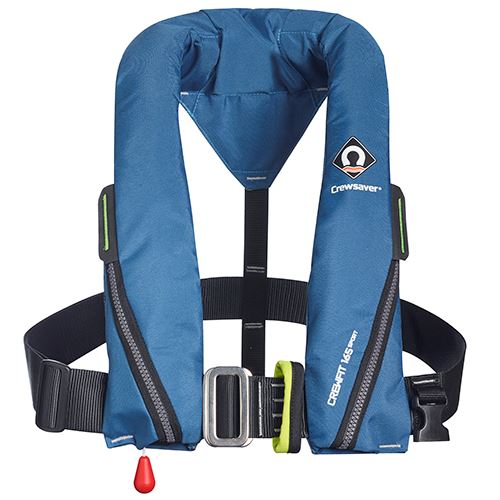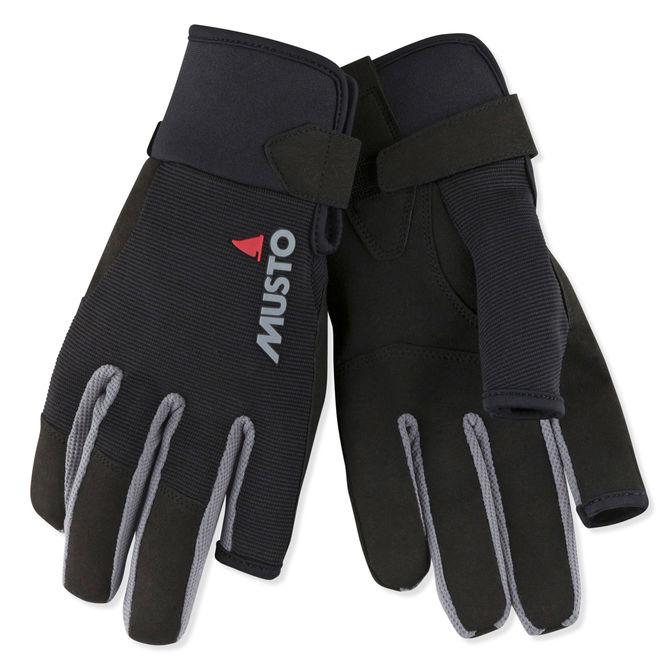
Buying the Right Sailing Gear
Get kitted out in quality gear for under $1,000
I have never been so cold as I was one April night as we sailed from Lakes Entrance to Refuge Cove. I ended up on deck in my sleeping bag to keep warm. And it wasn’t even that cold. But, I learnt a valuable lesson: invest in a set of sailing gear and don’t cut corners.
But sailing gear is expensive, and unless you have deep pockets you need to prioritise your purchases and get the right gear for the conditions you will be sailing in.
Offshore gear for Bass Straight is very different to what you will need sailing around the Whitsundays.
But, the good news is that you can get kitted out in quality sailing gear for under $1,000.
The following are my suggestions for getting started in inshore racing or coastal cruising throughout the year in Melbourne, Sydney or the like, with pathways to ‘gear-up’ as you venture offshore and your budget allows. I am brand and retailer agnostic.
A key principle is that you should get the best quality gear you can afford. A good jacket, for example, can last up to 20 years and will keep you warm and dry, while a cheaper one will leak and the zipper will break within a few years.
Basic Sailing Gear

Jacket
Probably the most important item for providing protection against spray and cold. So, it’s worth getting a good one. It is easy to blow our $1,000 on a jacket alone. But for inshore and coastal sailing I am very impressed by the Burke Super Dry range, which is excellent value at around $150. It is breathable, has a solid, non-corroding zip and a lovely fleece-lined hood. Wrist adjusters keep the water out and there are plenty of pockets. Be aware that the sizes seem to be one or two sizes too large even with a few layers on underneath, so it’s best to try one on first.
Fleece
A key principle of sailing gear is layering. The bottom layer should soak up the sweat, the mid-layer provide warmth and the outer layer water protection (and further warmth). A fleece is a mid-layer that can be worn on its own on dry but cooler days, and forms part of a layering ‘system’ to provide protection in poor conditions.
Musto offer two levels of fleece. The advanced Frome mid-layer is around $270 and offers superior warmth and wear. Ideal for winter sailing. The Corsica range is a comfortable all-round mid-layer at $150.
Gill makes a knit fleece, which I have worn for several years. It is prone to stretching, which is why I prefer the Musto.


Bib and Brace/Salopette
Apart from warmth and waterproofness, I want trousers that cover the chest for extra warmth, and also offer a pocket. Zhik make an excellent inshore and coastal salopette with a meshed lining, extra padding and tabs on the ankles. Now at $199.95 it is great value (couldn’t find it in-store in Melbourne, so best to order online).
https://www.whitworths.com.au/zhik-kiama-mens-inshore-trousers-black
If you can afford an extra $130, the Gill OS Insulated Trousers are much more toasty.
https://www.boatingcentral.com.au/products/gill-1071-gra01?variant=39550139400275
Shoes
I have been disappointed with the sailing shoes I have purchased over the years. Price is no guarantee of quality either. I bought a nice pair of Sperry’s which offered great grip – for about two months when the soles hardened and it was like ice skating across the deck. Some Chathams lasted six months until the sole started to come away. So, my tip is – don’t by boat shoes!
The best boat shoes I have bought are a pair of New Balance Fresh Foam Roav sneakers. Fast drying, grippy, comfy and great value at $100 (I got mine for $70 at DFO). Others swear by ‘skate shoes’ although I would shy away from the canvas ones, as you need something that will dry quickly.


Life Jacket
As a rule, boats should provide lifejackets for each person on board. However, if you are a regular you should have your own for a number of reasons – you know it is in-service, has key features (see below), sufficient inflation and won’t need adjusting each time.
The vital elements of a life jacket are that it is auto-inflatable so it will deploy if you are unconscious, has a crotch strap so that it doesn’t ride up when you are in the water, and includes a D-Ring for attaching a safety harness or halyard to haul you out of the water. You should add a light if sailing at night.
I have kitted out our training boat Boomer with the Crewsaver Crewfit 165N Sport Harness which offers all these features. At 165N it offers extra buoyancy. Make sure you get the auto which cost around $157.
https://chsmith.com.au/Products/Crewsaver-Crewfit-165N-Sport-Harness-Lifejackets.html
Gloves
Sailing gloves are an important safety item to prevent rope burn, blisters and cuts. You must get long fingered gloves, otherwise the tops of your fingers will not be adequately protected (short fingered gloves are for dinghy sailors).
I have found the Burke gloves to be slippery, the Gill somewhat stiff, so once again Musto gets my vote. The Essential Sailing range ($49) are beautifully designed, with a mix of fabrics to provide comfort, a great fit and durability (although you only get a season or two from any pair of gloves).
https://www.bosunslocker.com.au/products/musto-essential-sailing-long-finger-glove


Hats
Your hat must have a lanyard or it will not last the first race in over 15 knots. While caps are good, they don’t offer the protection of a wide brimmed hat. These are super-daggy (see picture for proof), but so is skin cancer.
The Musto Evo offers good protection and a lanyard ($57).
Sun-shirt
Speaking of skin cancer, I had a melanoma removed from my forearm a couple of years ago. Now I always wear a long sleaved sun-shirt/rashie under my shirt for sun protection. Prefer one with a ½ length zipper and white (which is cooler). These are often available at regattas, making a great memento as well as important sun-safe top. These are different to the thermal layering pieces. Hard to find with these specs, but try Amazon where they are $55.
https://www.amazon.com.au/DAYOUNG-Pullover-Protection-Outdoors-Performance/dp/B07X2RCN3D/
Duffle Bag
Finally, you will need something to put all your sailing gear in! At 70 litres, the Burke Waterproof gear bag is a good size, solid piece of kit for $80.

Gearing Up
If you need sailing gear for cold conditions then you will want to upgrade your jacket and add a couple of items.
An offshore Jacket will provide extra warmth and protection. I am very happy with my Musto BR2 which kept me warm while sailing the Tasmanian coast in a gale (see video below). It offers advanced BR2 fabric, plenty of fastenings, safety features and durability. They cost around $520. The other half of the equation is the Salopette, which should be the matching BR2 offshore trousers or the Gill OS Insulated Trousers (see above).
Also, throw a beanie in your duffle bag – it’s bound to come in handy.
Thermals
While you will find any thermals, including $12 ones from Target will keep you warm, the more advanced Musto range are designed as part of a layered system to take out the sweat, rather than to give you warmth. They are essentially sponges. I have a Musto and a Gill, and only use the Musto. Its shape and fabric mean that it doesn’t ride up and has better moisture management. Have a look at the range and consider the Championship Hydrothermal ($105) or MPX Baselayer ($170).
Boots
The problem with sailing shoes is that it doesn’t take much to get them wet, especially if you are racing or need to venture up to the front of the boat. In summer this probably doesn’t matter, but in winter wet shoes mean your feet quickly become cold. This is where boots come in. A very common boot that has been around for decades is the Burke Sea Boot. The soft upper cuff and draw cord help keep water out and your feet should stay dry (wear your salopette over them, or buy some gaiters). My preference is for the Burke Southerly Neoprene Sear Boot which is more flexible, and therefore feels less like wearing a moonboot. They have better thermal properties too.
https://www.whitworths.com.au/burke-southerly-neoprene-sea-boot
Conclusion
While you don’t need much gear for sailing in warm, dry conditions the weather can change quickly and leave you wet, cold and miserable. There is no better investment for a new sailor than getting quality sailing gear that is suitable for the conditions. It will be the best $998 you ever spend.